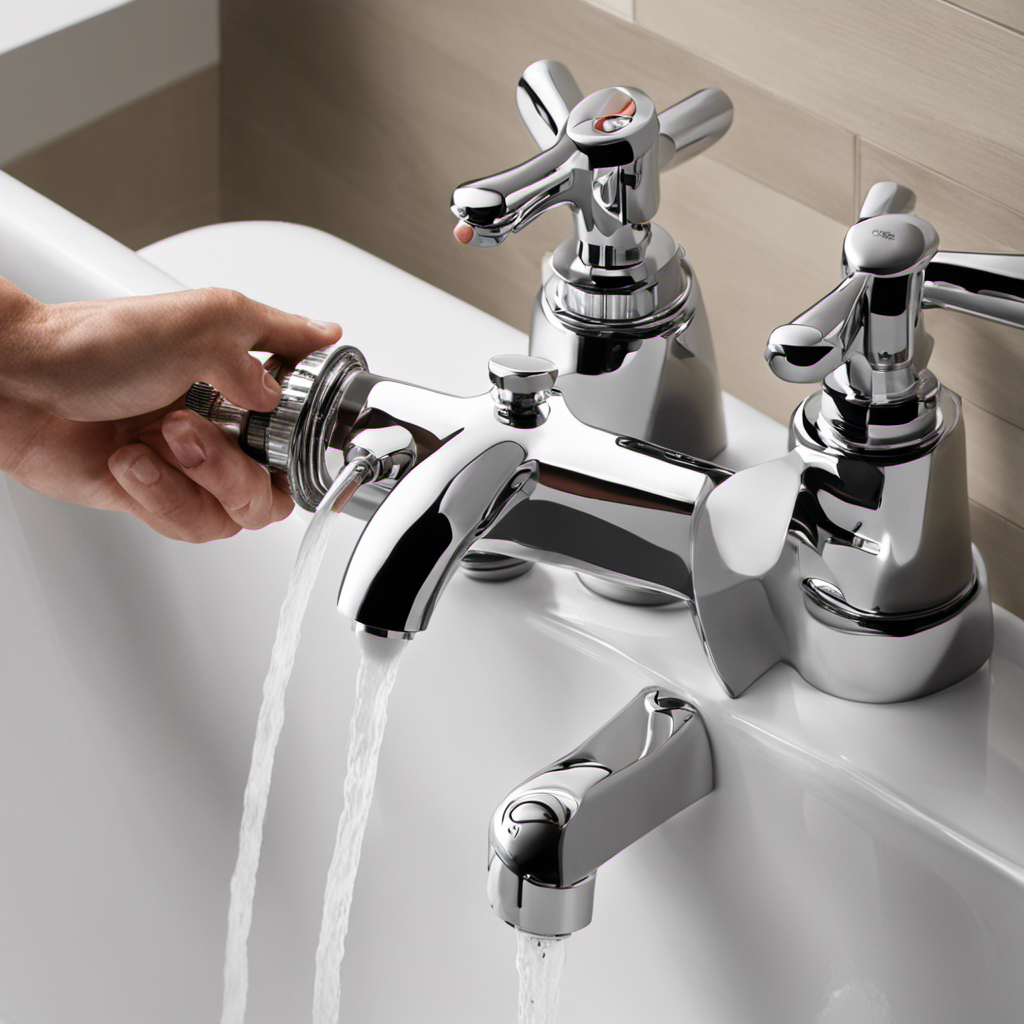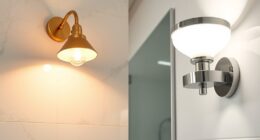Do you ever wonder what that little lever on your bathtub is for? Well, let me tell you, it’s called a trip lever, and it plays a crucial role in your bathing experience.
This nifty contraption actively controls the drain, allowing you to effortlessly fill and empty your tub. Understanding how it works and how to maintain it is essential for a smooth and enjoyable bathing experience.
In this article, we’ll delve into the ins and outs of trip levers, so you can become a master of bathtub functionality.
Key Takeaways
- The trip lever is a crucial component in controlling the drain of a bathtub.
- Understanding how trip levers work and how to maintain them is important for a smooth bathing experience.
- There are different types of trip levers for bathtubs, including plunger-style, toe-tap, overflow plate, and rotary trip levers.
- Common problems with trip levers include loose or broken mechanisms and stuck levers due to debris or mineral buildup.
How Does a Trip Lever Work
The trip lever is a mechanism that controls the drain stopper in your bathtub. It works by allowing water to flow out when engaged.
Understanding how to adjust a trip lever in a bathtub and troubleshooting trip lever issues can help you maintain a properly functioning drain system.
To adjust the trip lever, start by removing the trip lever cover plate, usually located near the overflow drain. Inside, you will find a threaded rod connected to the trip lever. By turning the rod clockwise or counterclockwise, you can adjust the position of the trip lever and the height of the drain stopper.
If you’re experiencing issues with the trip lever, such as a loose or stuck stopper, check for any obstructions or debris that may be causing the problem.
Types of Trip Levers for Bathtubs
There are various kinds of trip levers available for tubs. When it comes to trip lever installation and adjustment, it’s important to choose the right type for your bathtub. Here are four types of trip levers commonly used:
-
Plunger-style trip lever: This lever operates by pressing down on a plunger to open or close the drain.
-
Toe-tap trip lever: As the name suggests, this lever is activated by pressing it with your toe, making it a convenient option.
-
Overflow plate trip lever: This lever is installed on the overflow plate, allowing you to control the drain with a simple up or down motion.
-
Rotary trip lever: This lever operates by turning it clockwise or counterclockwise to open or close the drain.
When installing or adjusting a trip lever, ensure that it is securely attached and functions smoothly. Proper installation and adjustment will ensure that your bathtub drain operates efficiently.
Common Problems With Trip Levers
To prevent common problems, make sure you select the correct type of trip lever for your tub. Troubleshooting trip levers can be frustrating, but there are a few common issues that you can easily address.
One of the most common problems is a loose or broken trip lever mechanism. This can cause the lever to not engage properly, leading to difficulty in draining the tub.
Another problem can be a trip lever that gets stuck in the open or closed position. This can be caused by debris or mineral buildup in the mechanism.
If you encounter any of these issues, replacing the trip lever mechanism may be necessary. By following the steps in the next section, you’ll be able to repair your trip lever and restore proper functionality to your bathtub.
How to Repair a Trip Lever in a Bathtub
Start by identifying the issue with your trip lever mechanism and determine the best course of action for repairing it. Troubleshooting trip lever issues can be a daunting task, but with a little knowledge and the right tools, you can fix it yourself.
Here’s a step-by-step guide to help you get your trip lever back in working order:
- Remove the trip lever cover plate to access the trip lever mechanism.
- Inspect the trip lever and linkage for any signs of damage or wear.
- Clean the trip lever and linkage thoroughly to remove any debris or buildup.
- Lubricate the trip lever and linkage with a silicone-based lubricant to ensure smooth operation.
If these steps don’t solve the problem, you may need to consider bathtub trip lever installation. It’s important to consult a professional if you’re not comfortable with DIY repairs.
Tips for Maintaining Your Bathtub’s Trip Lever
Make sure you regularly clean and lubricate the mechanism to keep it in good working condition.
The trip lever mechanism in your bathtub is an essential component that allows you to open and close the drain. Over time, dirt, soap scum, and other debris can accumulate in the mechanism, causing it to become stiff or malfunction.
To clean the trip lever mechanism, start by removing the trip lever plate and unscrewing the linkage. Use a brush and mild detergent to scrub away any grime. Rinse thoroughly and dry before reassembling.
Once clean, apply a small amount of lubricant to the moving parts to ensure smooth operation. Regular maintenance will extend the life of your trip lever mechanism and prevent unnecessary repairs.
Frequently Asked Questions
What Is the Purpose of a Trip Lever in a Bathtub?
The purpose of a trip lever in a bathtub is to control the drain. By pushing or pulling the lever, you can open or close the drain stopper. This mechanism allows you to fill or drain the tub as desired.
Can I Install a Trip Lever in My Existing Bathtub?
You can install a trip lever in your existing bathtub. It has pros and cons, such as easy operation but potential clogging. Common issues to watch out for are incorrect installation and leaks.
How Do I Choose the Right Type of Trip Lever for My Bathtub?
To choose the right type of trip lever for your bathtub, consider the different options available. Look for one that matches your bathtub’s style and size, and ensure it has a reliable mechanism for easy operation.
Are There Any Safety Concerns Associated With Trip Levers?
When it comes to trip levers, safety concerns arise due to potential hazards. It’s important to ensure that the trip lever is properly installed and maintained to prevent accidents or injuries while using the bathtub.
Can I Replace a Trip Lever Myself, or Should I Hire a Professional?
You can replace a trip lever yourself, but hiring a professional has its advantages. DIY installation saves on the cost of hiring a pro, but there are pros and cons to consider.
Conclusion
In conclusion, now that you understand how a trip lever works and the types available for bathtubs, you are equipped to handle any issues that may arise.
Remember, ‘an ounce of prevention is worth a pound of cure.’ So, make sure to regularly maintain your bathtub’s trip lever to avoid any unnecessary repairs.
By following these tips and keeping your trip lever in good condition, you can enjoy a relaxing and hassle-free bathing experience for years to come.










